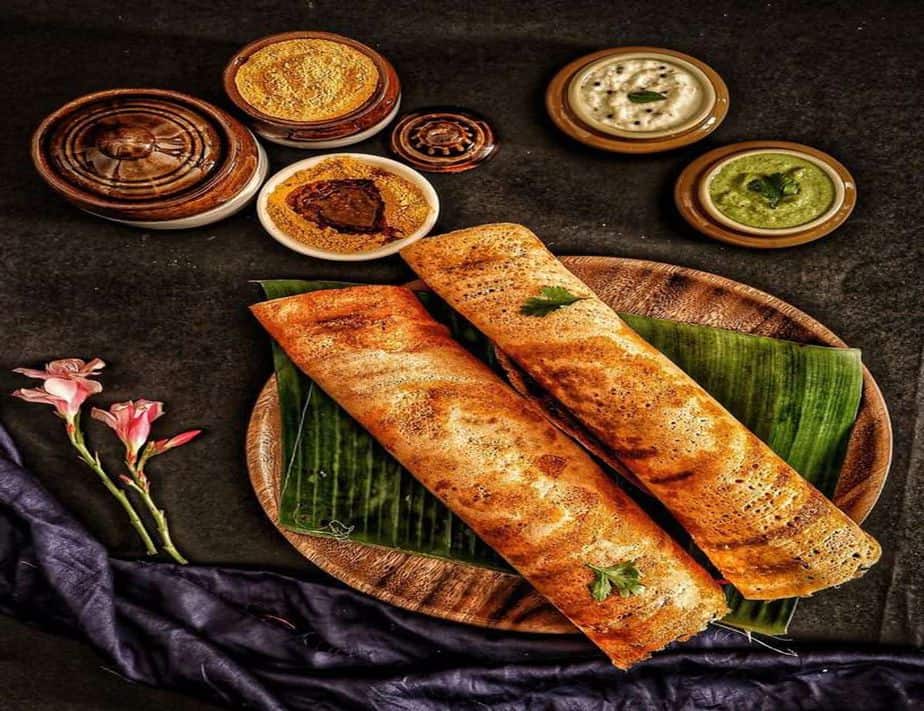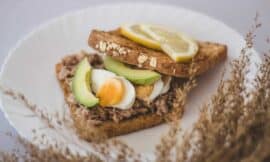Dosa Batter Recipe, Learn how to make Dosa Batter at home. This is a comprehensive and detailed post that will help you in making the key ingredient of Dosa – the Dosa Batter. This will enable you to prepare all kinds of crispy and at the same time soft dosa at home.
If you are searching for dosa batter online, then this is the best content for you.
Whether you are a beginner or an expert, if you follow the step-by-step instructions on preparing the dosa batter recipe from this post, you would surely become an expert in this South Indian dish.
If you are new to South Indian culture/cuisine, then scroll down to know more about this dish.
What is Dosa?
Dosa is an extremely popular south Indian very thin crepe made from a mixture of fermented lentil and rice batter. It usually comes in two forms, the thin version, and a thicker version. The thin version of dosa is popularly called a paper roast in southern India whereas the thicker version of dosa is called uthappam in Tamil.
What are the Ingredients of Dosa/ What is dosa batter made of?
Dosa Batter is the main ingredient of dosa. Even though there are different varieties and types of dosa, the batter remains the chief ingredient used in dosa. The main ingredients used in dosa batter are urad dal or the black lentils, fat rice or idli rice(a type of oval-shaped rice), rock salt, fenugreek(the chief ingredient responsible for the crispness of dosa), and some toor dal.
How to make Dosa batter at home?
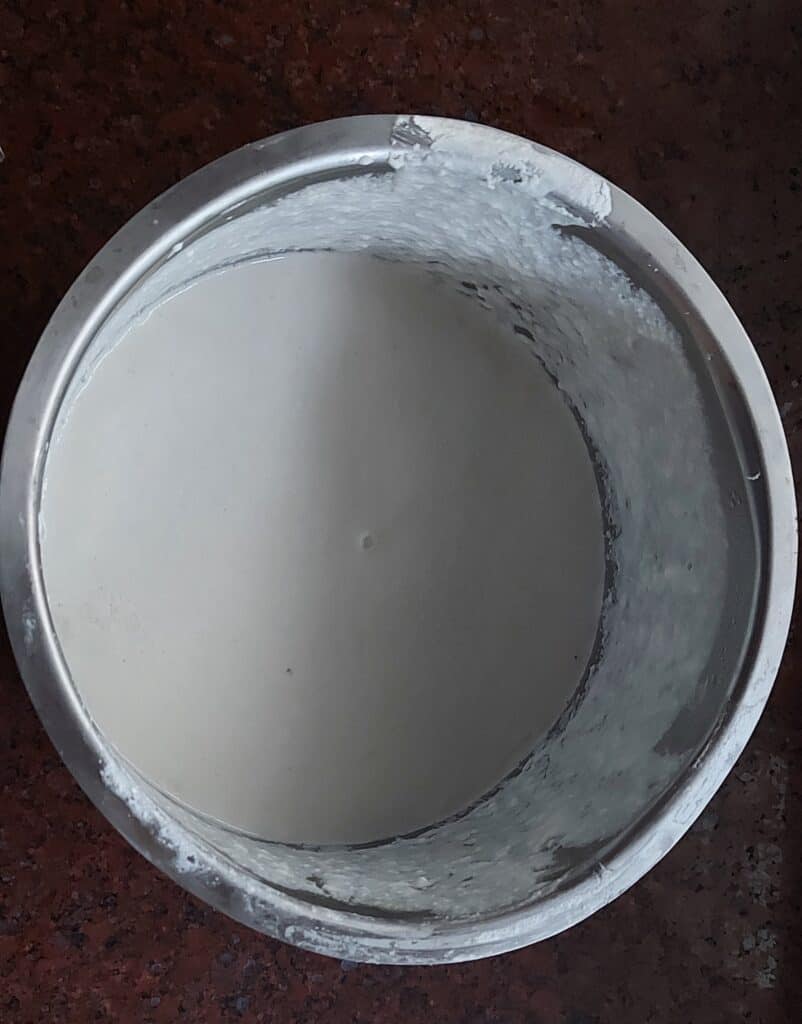
Dosa can be made at home by soaking urad dal and idli rice in warm water and by leaving them untouched for about four to five hours. Afterward, the rice and lentil mixture is ground in a wet grinder for about 10-15 minutes until the batter becomes a smooth consistency and a semi-liquid texture.
Then the fermented batter is spread into a thin layer on a Tawa or a griddle(It is a cooking device with a broad flat surface either made of aluminum or stainless steel ).
Before moving on, if you are a fan of exotic dishes that you wish to try from India, check out this link.
What should be the consistency of idli/dosa batter?
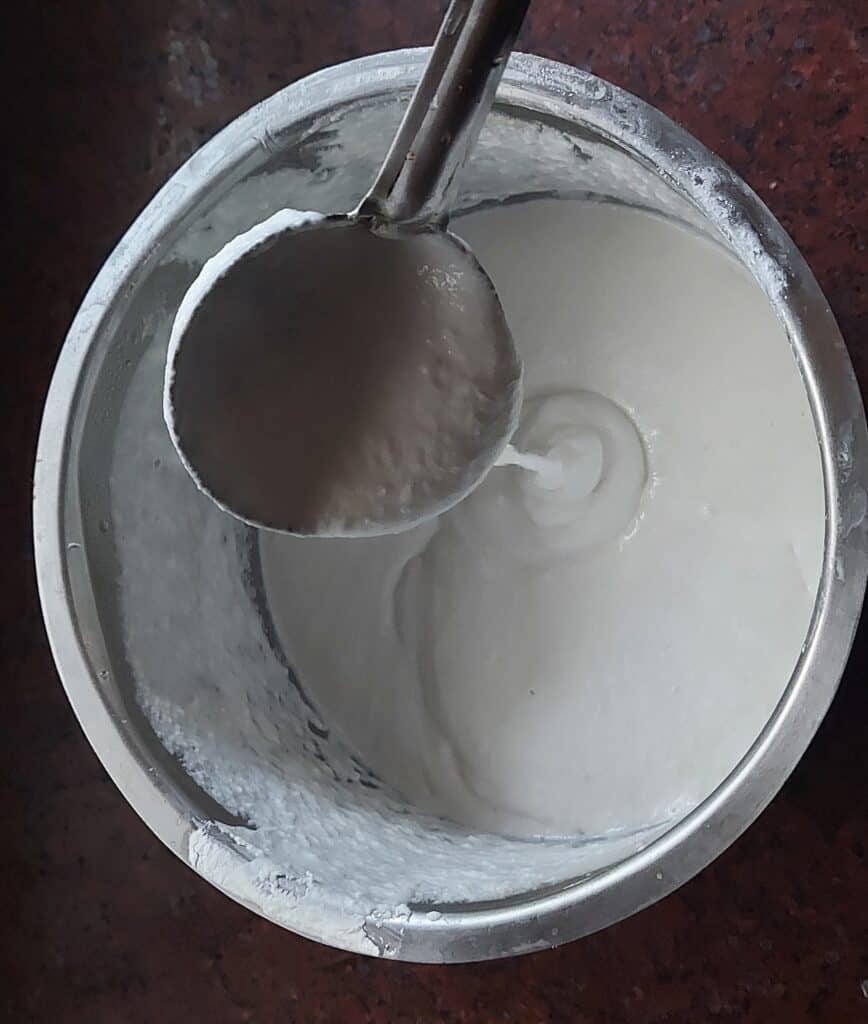
The success of a dosa batter lies in the consistency of the mixture. The batter should have a smooth flowing consistency and should not be either thick or too watery. Once the perfect batter consistency is achieved, then spongy idlis and crispy dosas are a reality.
How to make the perfect dosa batter?
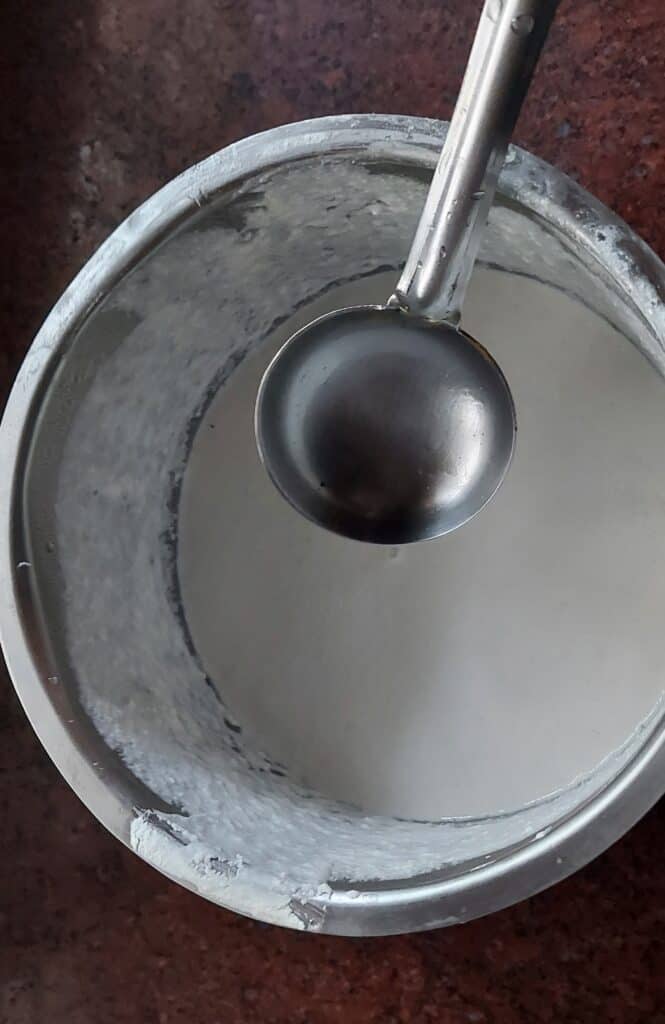
If you visit each south Indian home, you would notice different parameters in dosa. One may be super crisp, while others may be super soft and some might be even golden brown. It all lies in the preparation of batter and the process of fermentation which is extremely important in the final outcome of dosa.
The secret of the perfect batter lies in the ratio of rice to urad dal. Each one has its own ratios such as 1:1,1:3, 3:4. But after a lot of trial and error, I have developed a ratio that results in super spongy idli and crispy golden brown dosa.
The ratio which I follow is 1:4!
For one cup of urad dal(black lentil), four cups of idli rice must be used in order to achieve the perfect dosa batter consistency and texture.
Before moving on, if you are a fan of exotic dishes that you wish to try around the world, check out this link. You won’t be disappointed.
How to grind the dosa batter?
Wet Grinder or blender can be used to grind the dosa batter. I personally use a wet grinder to prepare the batter. Wet Grinder is specifically designed to prepare dosa batter alone whereas a blender is used to make fruit juices.
But keep in mind that, both wet grinder and blender can be used to make dosa batter. Wet Grinder can be used to make large amounts of batter for 5 to 10 people. Blender can be used to make dosa batter in small quantities i.e 2-3 people. If you like experimenting with different kinds of dosa batter, then blender is the way to go.
Dosa Batter Fermentation Process
It is a well-known fact that fermentation is absolutely vital for dosa preparation. Without fermentation, the taste of the dosa would be sour as well as white. The process of fermentation provides the characteristic taste, color, and flavor for dosa.
The secret of tasty and crispy dosa lies in the fermentation of the batter as well as the ratio of rice to black lentils. Also, fenugreek is an important factor in the golden brown color of the dosa.
After the grinding of rice and black lentils, once the batter has become a semi-liquid consistency or a pasty texture, pour all the batter contents from the wet grinder or a blender into a large pan. I usually pour the batter to 3/4th of the volume of the large pan in order to provide room for the batter to rise after fermentation.
The method of fermentation of the batter differs from hotels and home preparations. In restaurants, the batter is poured into a very large container. Usually, lemon or vinegar is added to the batter in order to increase the speed of fermentation.
In-home preparation of the batter, mostly these would not be added in order to make the fermentation occur naturally. Hence it would take 5 to 6 hours for the batter to ferment when done at home.
Dosa Batter Ingredients:
Ingredient for batter used in crispy Dosa:
- 1 cup Black lentils / Urad Dal
- 4 cup idli rice
- 1 to 2 cup of water
- 3 tablespoons of Bengal Gram(Optional)
- 1 teaspoon of fenugreek/methi seeds
- 3 teaspoon of rock salt
Ingredient for 2 in 1 batter(Idli / Dosa):
- 1 cup Black lentils / Urad Dal
- 4 cup idli rice
- 1 to 2 cup of water
- 3 tablespoons of Bengal Gram(Optional)
- 1 teaspoon of fenugreek/methi seeds
- 3 teaspoon of rock salt
When to add salt in Dosa Batter?
This question arises for everyone who is preparing dosa batter. Whether to add salt before the grinding or after grinding. Hence I will clear out some confusion one by one.
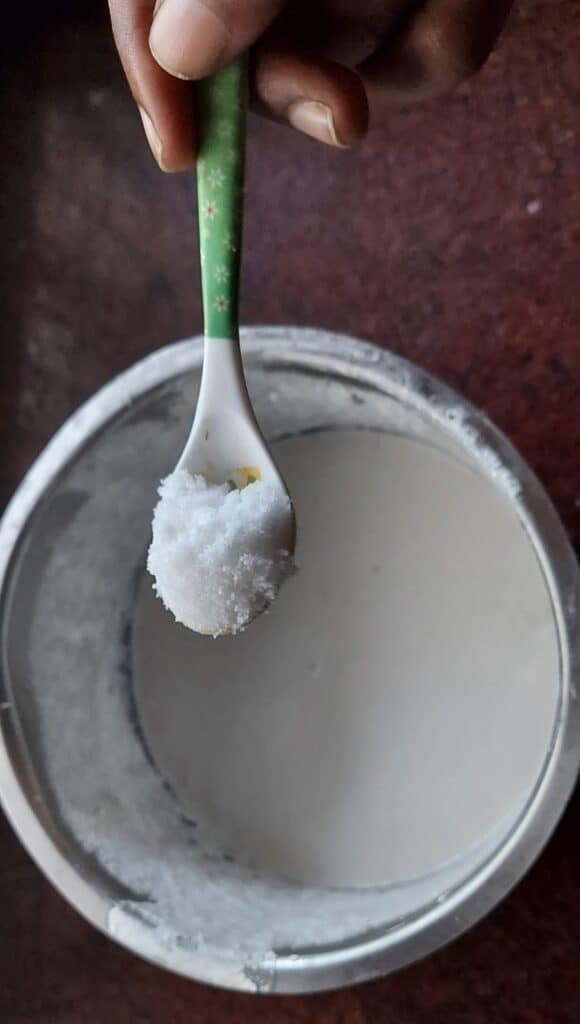
- How much salt do you put in dosa batter?
- Four tablespoons of rock salt should be added for 10 cups of dosa batter or 1 tablespoon of rock salt per 2.5 cups of dosa batter.
- How do you fix salty dosa batter?
- Salty dosa batter can be fixed either by adding extra water to the batter at the cost of making the batter too liquid or by adding some Rava(semolina or granulated wheat) to the batter.
- Which Salt is best for fermentation?
- Rock Salt and Iodized salt are the two commonly used salt in dosa batter. Usually rock salt is the best for dosa batter preparation because it promotes the process of fermentation by promoting the growth of good bacteria. Whereas Iodozed salt kills all bacteria altogether thereby inhibiting the process of fermentation
- When to add salt for dosa batter?
- Salt can be added to dosa batter before or after fermentation. But it’s best to add the salt after fermentation because adding salt before fermentation slows down the whole process significantly.
Preparation of Making Dosa Batter:
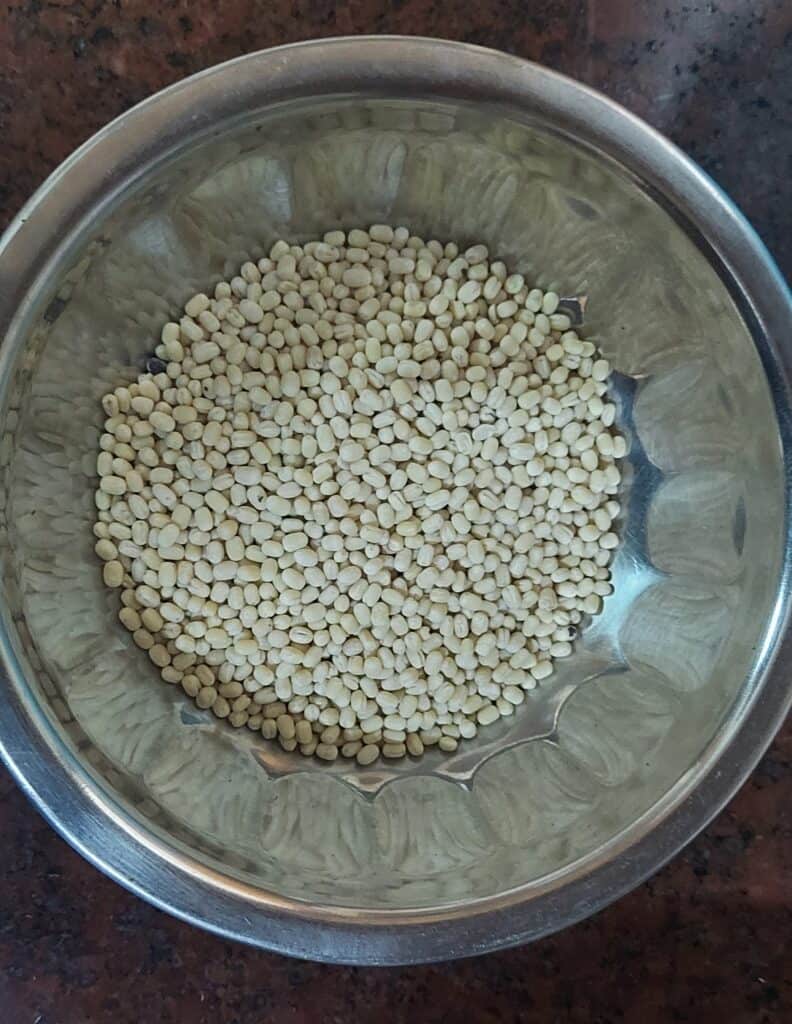
- Take 1 cup of black lentil seeds and 1 spoon of methi(fenugreek) seeds and pour all of them into a single bowl
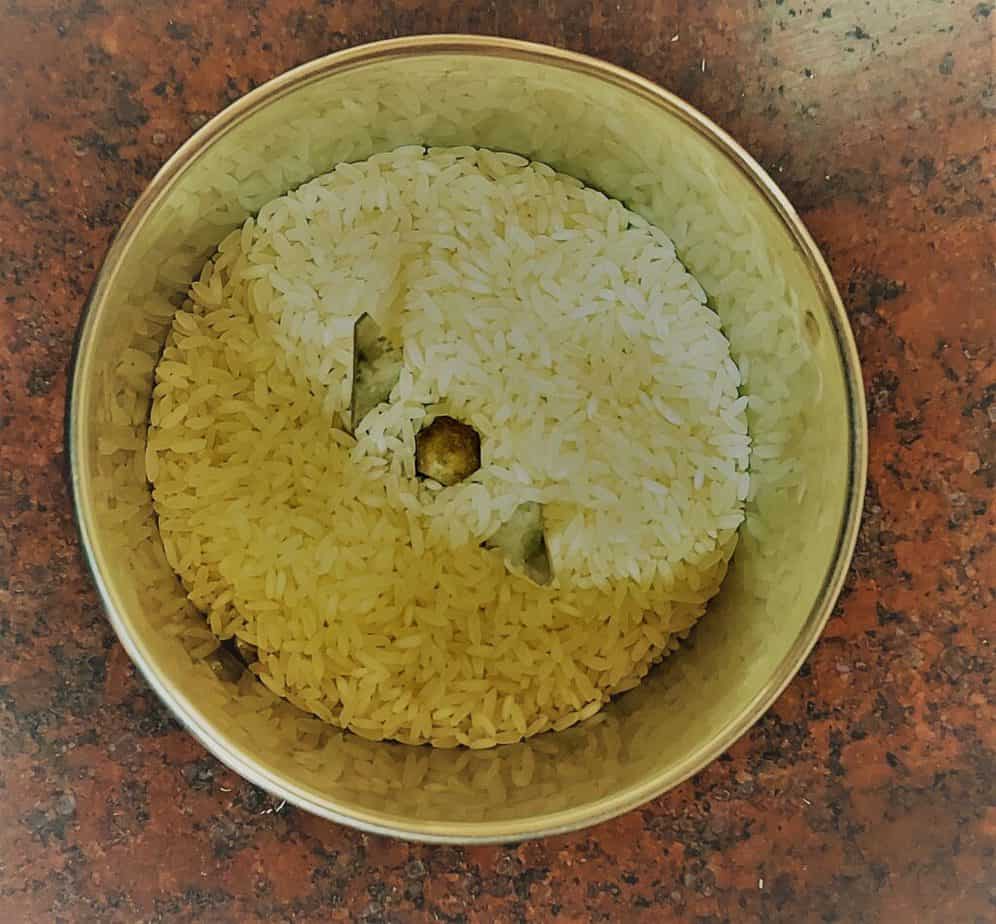
- As I said earlier 1:4 ratio works best for dosa batter. Hence Take 4 cups of rice and put them in a separate bowl
- Rinse the lentil seeds well until the water is clear of fog. Wash the rice well again and again till the water becomes crystal clear.
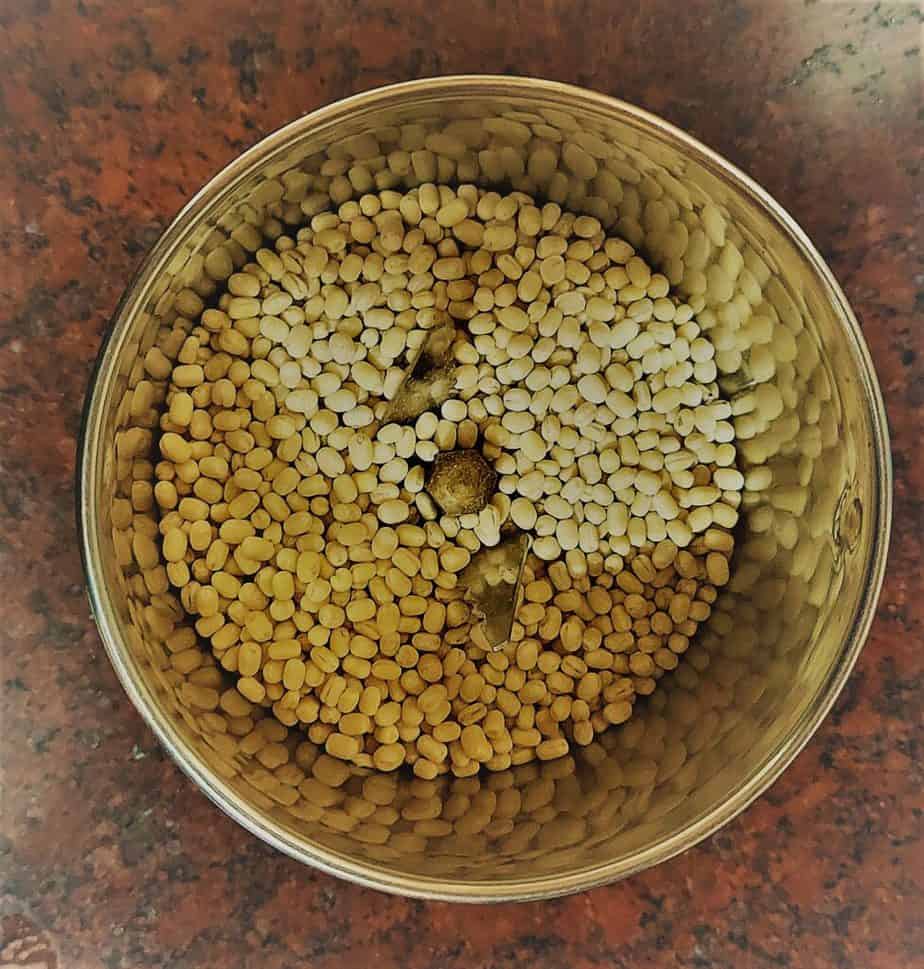
- Now soak the lentils for 6 hours and rice for 4 hours. It is best if they are soaked in water overnight.
- After the rice and dal are soaked well, drain out the water and keep them on a dry towel under a fan for an hour. This should soak up the extra moisture.
- Now put all the dried lentils, rice, and fenugreeks into a wet grinder and blend them for about 15 to 20 minutes. The first set of batter is usually coarse. It is totally up to you whether to go for the second blend of the batter.
- If you want crisp dosa, then grind the batter for the second round till the batter becomes very smooth. Also, the amount of water to be added while grinding depends upon person to person, usually, I add two cups of water to the batter.
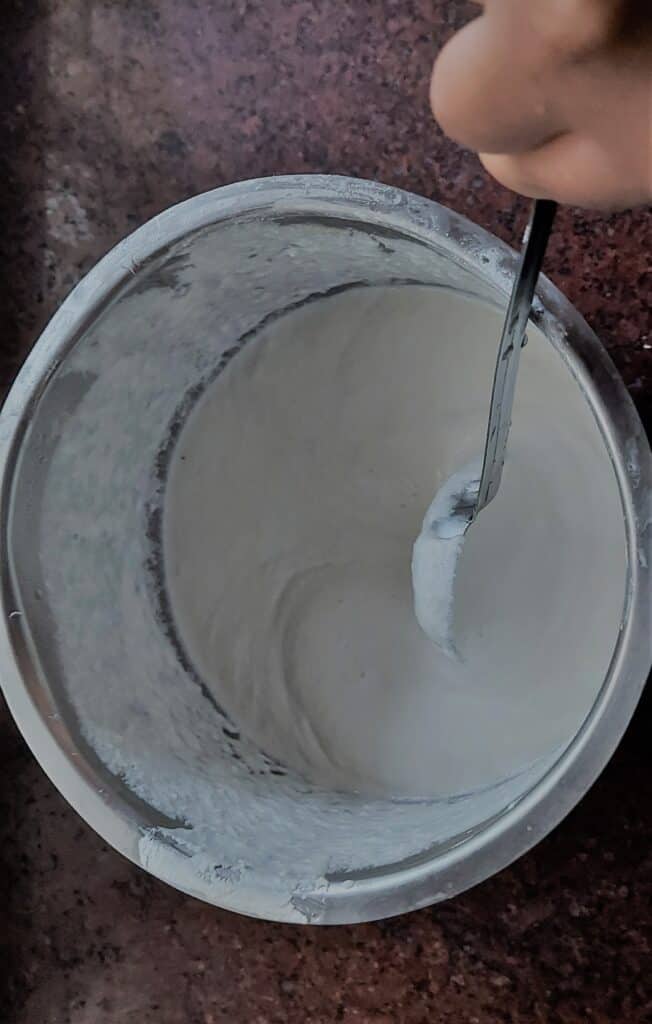
- Then after adding the batter into a large bowl, stir the batter well in order to mix the contents well. It is generally suggested to use hands to stir the batter because of the warmth of the hand that aids in the fermentation process.
- Now let the batter sit in a closed large bowl in a medium warm place in order to make the batter ferment.
- After 5 to 6 hours, you should see the frothy, bubbly texture of the batter which means the batter has fermented well.
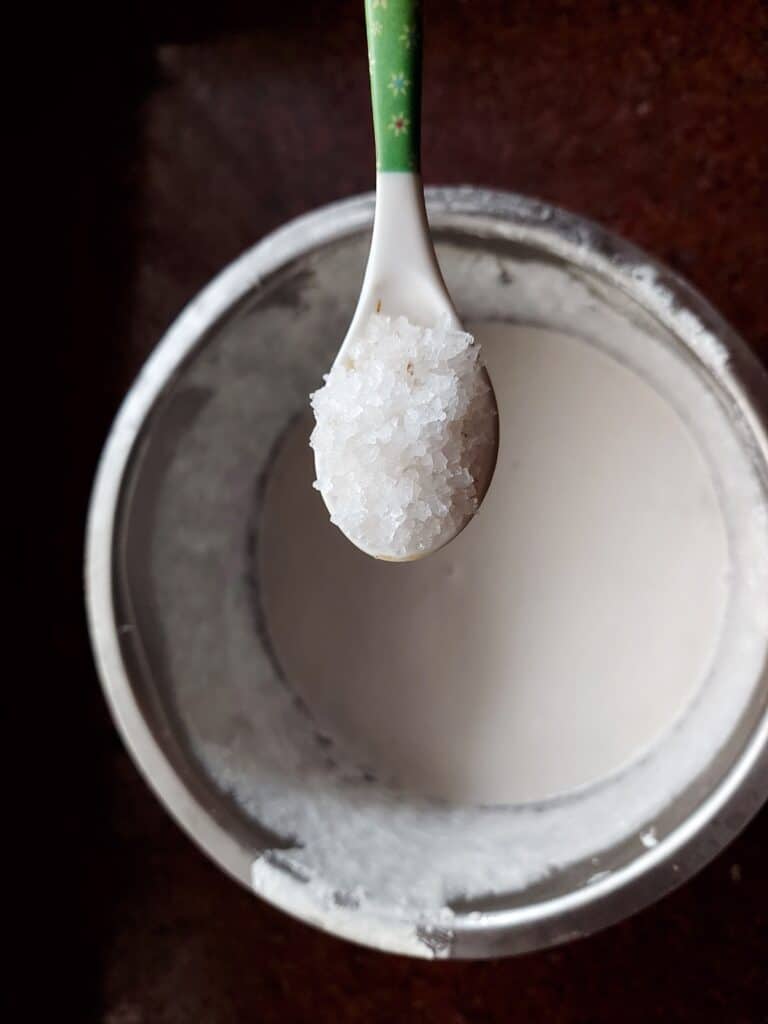
- As I said earlier in the post, it is essential to add salt to our batter now in order to obtain the best results. Now stir the batter well and keep them inside the refrigerator.
- Our dosa batter is now ready to make yummy and crispy dosa!
- Check out this link for more added information on the dosa batter recipe.
How to make dosa using dosa batter?
Now that we have created our batter, it’s time to use the batter to make our crispy dosa.
Now add some oil to the griddle or Tawa and let it heat for medium heat for 1 to 2 minutes.
Sprinkle some drops of water on the Tawa to check if the metal is hot enough. Once when you steam immediately after you sprinkle that means it is hot enough to use the batter.
Now take one small cup amount of batter and spread the batter evenly starting from the center in a circular fashion.
Now add a teaspoon of oil on the heating batter spread to enhance the crispness of the dosa.
Once you see golden brown along the edges, that means our dosa ready and just roll it out and put it on a plate to enjoy with some sambar or chutney.
How to make idli using dosa/idli batter?
Dosa batter can be used to make dosas as well as idlis.
Now that we have seen how to make dosa using dosa batter, I will show you how to make idli using the batter which we have prepared right now!
If you like to know about 15 food recipes to cook in 2021, check out this link.
What is Idli?
Idli is a soft spongy steamed pancake made from a batter of black lentils and idli rice. Idli is part of south Indian cuisine. Idli is super healthy because of the proteins present in the black lentils and also nearly zero fat because it’s steamed and no oils are added in the process.
Idli is made from a cooking pan with a layer of cup-shaped plates arranged on top of one another where the rice batter is poured into the small cups on the plate and the plate is kept in steaming water and the cooking pan is closed.
Also check out our websitefor more interesting content and recipes.
Let it boil for 5 to 10 minutes and our spongy and tasty idlis are ready. You can serve the idlis with sambar and coconut chutney.
Nutritional Information of Dosa(Estimation only):
| Calories | 118 |
| Sodium | 1.5mg |
| Potassium | 41mg |
| Fibre | 3g |
| Carbohydrate | 23g |
| Protein | 5g |
| vitamin | 0.7mg |
| calcium | 15mg |
| Iron | 2.1mg |
Notes for Dosa Batter Recipe:
- Fenugreek is the sole Ingredient responsible in the dosa batter for the occurrence of golden brown color and crispness of dosa. Use more fenugreek for a more crispy golden brown dosa.
- Do not speed up the fermentation process by adding lemon or vinegar. Prefer the natural fermentation of the batter as it maintains the tasty flavor and texture of dosa. Also, this helps in making super spongy idlis.
- After the water soaking of lentils, it is mandatory to dry the lentils and rice before drying them out. Most of them do not follow this process and as a result, many lose the crispness of dosa.
If you liked our content on dosa batter preparation, share this with your friends and family.


